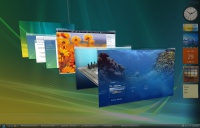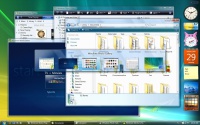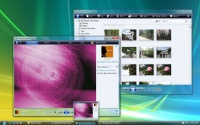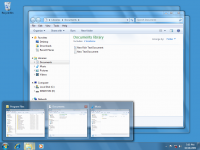Desktop Window Manager: Difference between revisions
No edit summary |
(Detailed changes in 7) |
||
| Line 5: | Line 5: | ||
== Windows 7 == | == Windows 7 == | ||
The DWM saw significant performance improvements in [[Windows:7|Windows 7]]. New features were also added, including the ability to | The DWM saw significant performance improvements in [[Windows:7|Windows 7]]. New features were also added, including: | ||
*Aero Peek: the ability to preview the desktop by making all open windows transparent (glass effect) | |||
*Aero Snap: most applications can be snapped to either half of the screen or maximized by dragging to corresponding direction (left, top or right) | |||
*Aero Shake: the ability to minimize or restore inactive windows by shaking the active window | |||
== Windows 8 == | == Windows 8 == | ||
Revision as of 13:32, 3 July 2013
The Desktop Window Manager is the desktop compositor responsible for providing the Windows Aero visual style and effects, such as live thumbnails in the taskbar. It replaced the Desktop Composition Engine after the development reset of Windows Longhorn.
Windows Vista
In versions of Windows prior to Windows Vista, applications painted their visible region directly to the surface displayed by the video card, which often resulted in various visual artifacts, such as window trailing. Under the Desktop Window Manager, windows are drawn to off-screen surfaces in video memory. Due to being rendered off-screen, these representations can be used for various visual effects, such as Flip 3D.
Windows 7
The DWM saw significant performance improvements in Windows 7. New features were also added, including:
- Aero Peek: the ability to preview the desktop by making all open windows transparent (glass effect)
- Aero Snap: most applications can be snapped to either half of the screen or maximized by dragging to corresponding direction (left, top or right)
- Aero Shake: the ability to minimize or restore inactive windows by shaking the active window
Windows 8
The Desktop Window Manager in Windows 8 is capable of software rendering if the machine does not have capable hardware. New features include support for stereoscopic 3D, composition of the Start screen, and management/separation of desktop applications from Windows Store applications. The Desktop Window Manager cannot be disabled.
In build 7989, the DWM crashes while changing visual styles.



